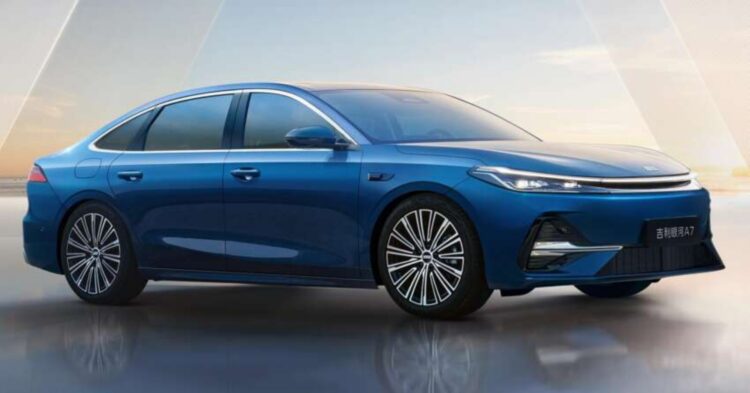Geely has recently unveiled its first plug-in hybrid sedan, the Galaxy A7, built on the company’s dedicated Geely Electric Architecture (GEA) platform. This new model also debuts the automaker’s “EM AI Super Hybrid 2.0” system, marking a significant leap in Geely’s hybrid technology.
Before diving into the intricacies of its hybrid powertrain, let’s take a moment to dive into its design, which features a fastback silhouette. At the front, the sedan has a fully enclosed grille, flanked by sharp, angular side inlets. A full-width LED light bar elegantly connects the slim headlights, a design theme mirrored at the rear as well. Meanwhile the 19-inch ‘blade’ wheels completes the exterior.
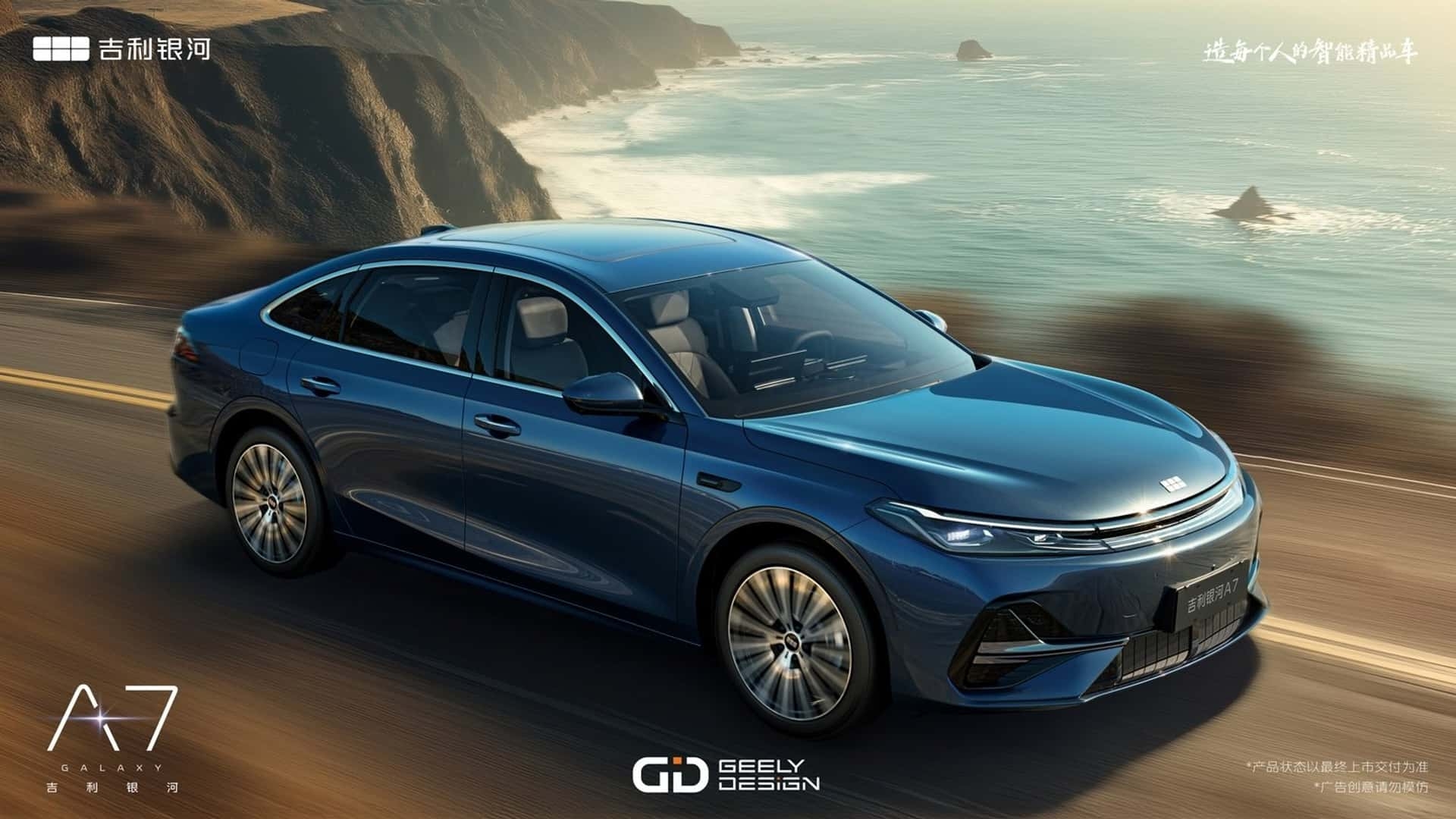
Inside, A7 EM-i shares its cabin design with the larger Geely Starshine 8, starting with a 15.4-inch floating centre display powered by the Flyme Auto system. It is complemented by a 12.3-inch digital instrument cluster and a dual-spoke steering wheel that is also present in a Proton eMAS 7. Adding to the premium experience is a 16-speaker Flyme Sound audio system, a 16.6-inch head-up display and a panoramic sunroof with an electric sunshade
As previously mentioned, the Galaxy A7 is equipped with Geely’s latest EM AI Super Hybrid system, which combines a 1.5-litre naturally aspirated Atkinson-cycle four-cylinder engine with a P3 electric motor. This hybrid setup delivers a combined output of 238 PS and 262 Nm of torque, enabling the car to complete the 0–100 km/h sprint in just 7.1 seconds, with a top speed of 190 km/h.
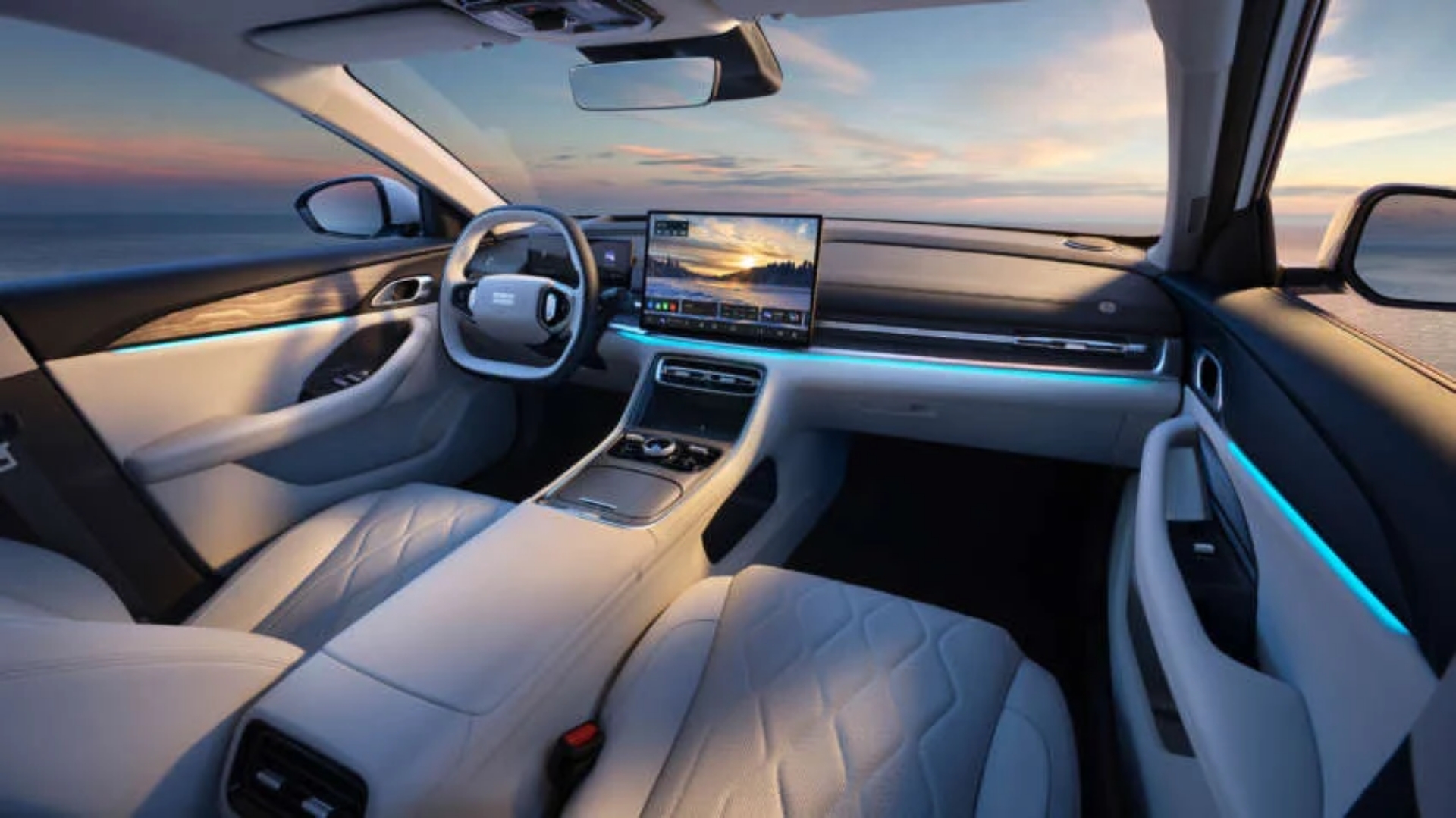
According to Geely, the engine achieves an impressive thermal efficiency of 47.26%, made possible through the use of friction-reducing technologies, a variable-displacement oil pump, and an optimised thermal management system. Additionally, the powertrain is also managed by an 11-to-1 electrified dedicated hybrid transmission (DHT).
Furthermore, the Galaxy A7 is equipped with Geely’s Xingrui Intelligent Computing Center 2.0, which offers 23.5E FLOPs of computing power. The company notes that this computing infrastructure enables intelligent energy management, enhancing performance while minimising fuel consumption.
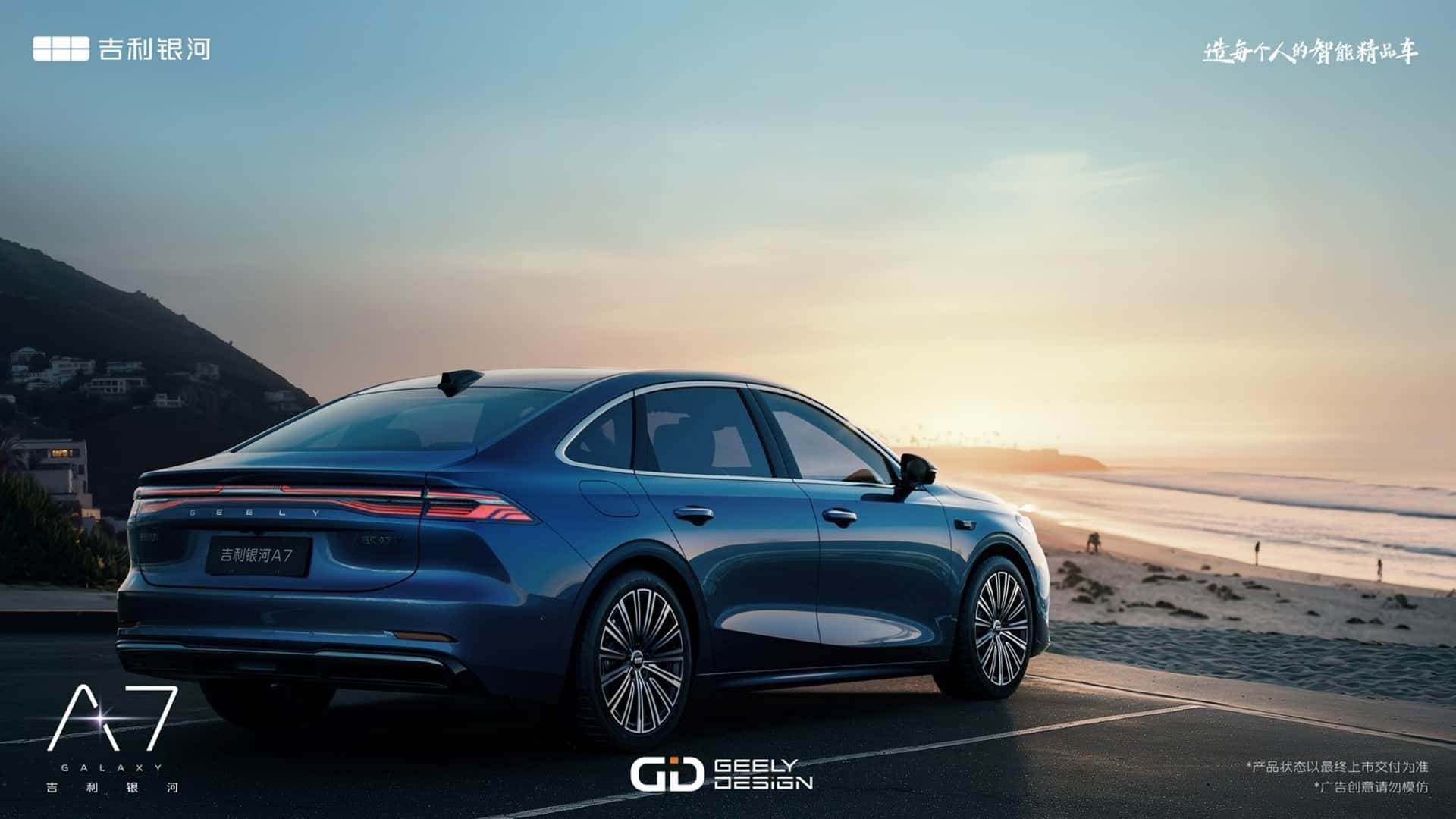
On China’s CLTC test cycle reveals a fuel consumption rate of 2.67 litres per 100 km for the A7, even when the battery state of charge is low. Independent tests by Chinese media have recorded figures as low as 2.49 litres per 100 km. With a claimed electric-only range of 150 km, the car offers a total driving range of over 2,100 km on a full tank and charge.
However, the 150 km EV range corresponds to the largest battery option, an 18.99 kWh lithium iron phosphate (LFP) unit. Two other battery options are also offered: an 8.5kWh pack providing 55 km of electric range, and an 18.4kWh unit with 70 km of range.
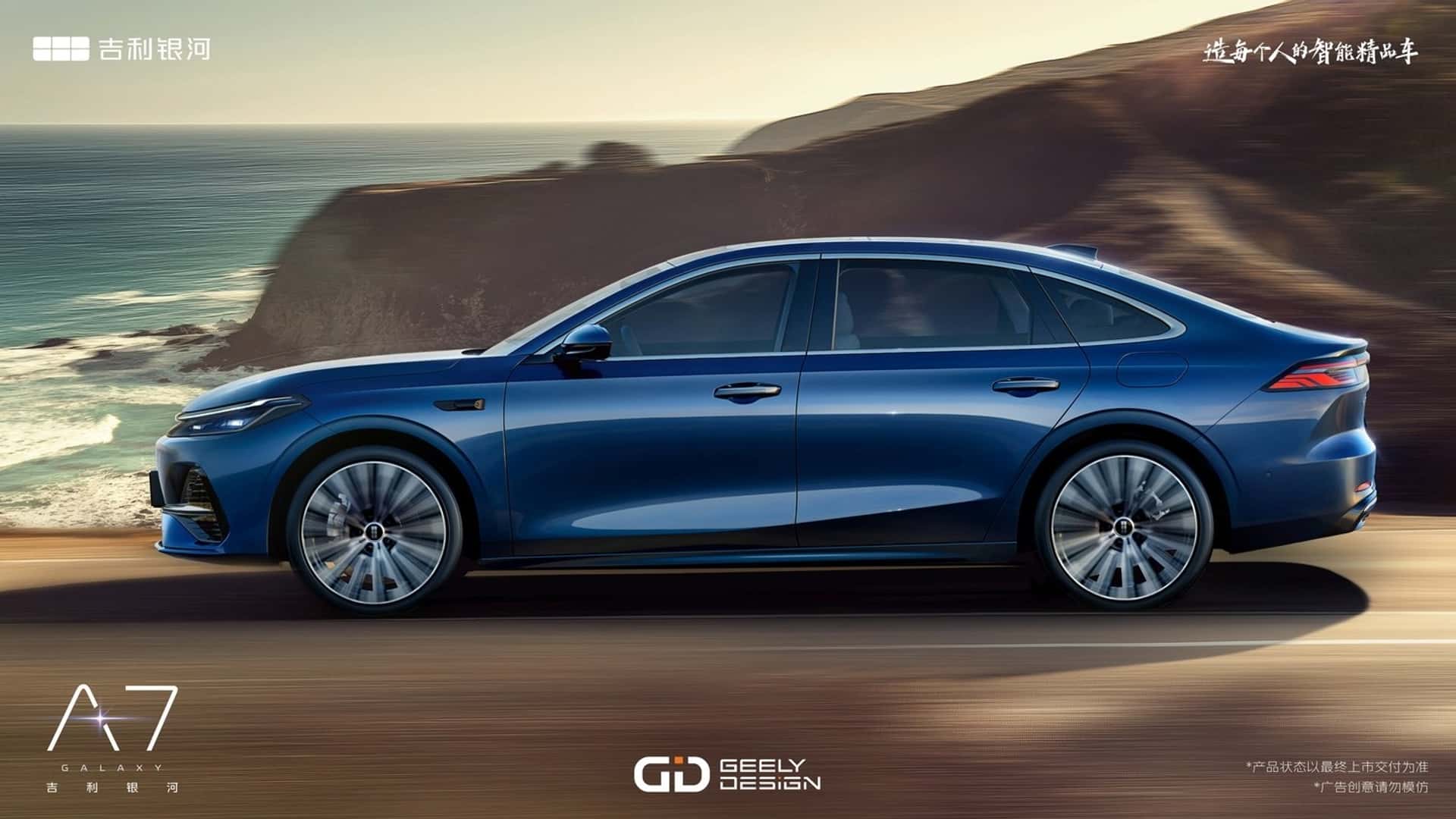
In terms of charging, it takes 18 minutes to replenish from 30% to 80% using a DC fast charger (up to 37kW). The A7 also supports a 3.3kW vehicle-to-load (V2L) function, allowing users to power external devices on the go.
Now the biggest question here is, would this model be seen in Malaysia under the guise of Proton’s badge? Well, this writer thinks that, it either could be a PHEV version of the eMAS or it could also be the next-gen S70.
(Source: CNC / Paultan.org)

